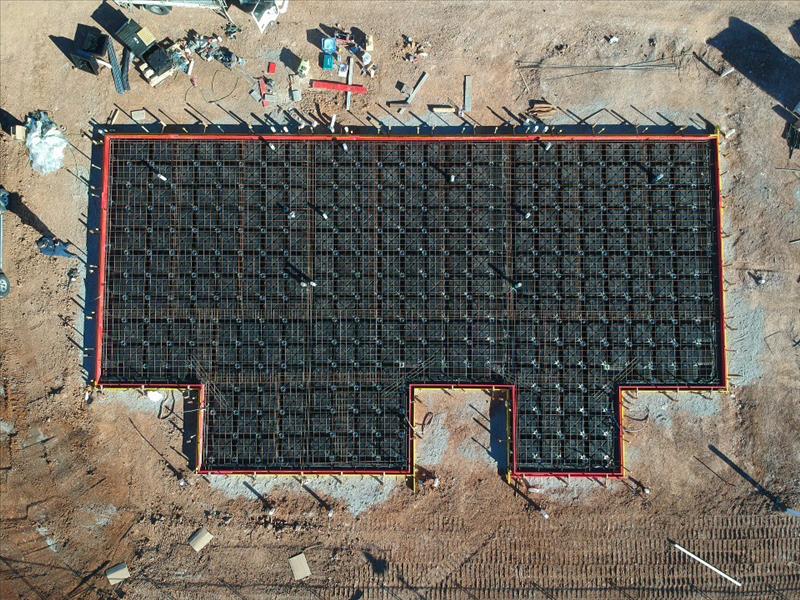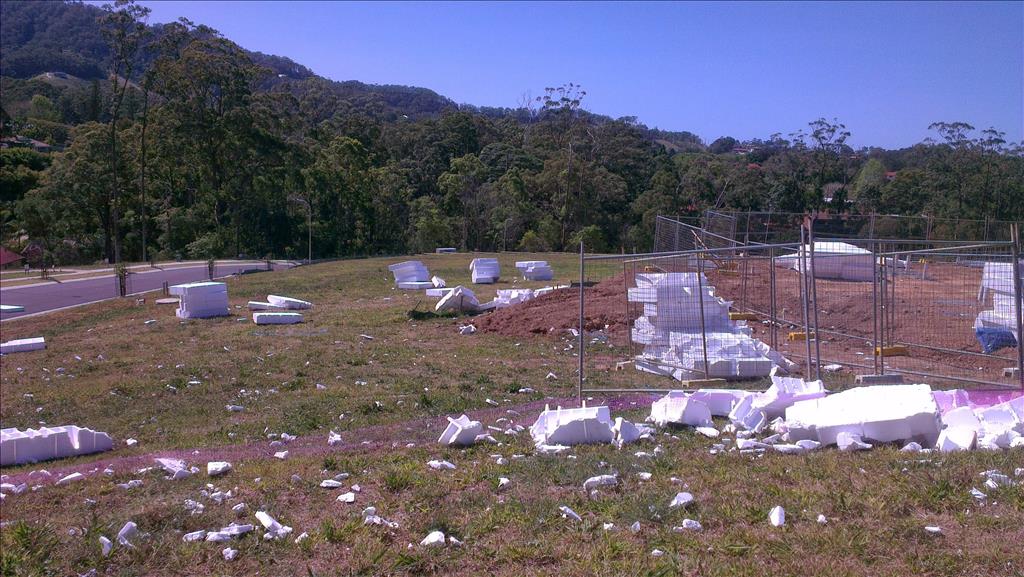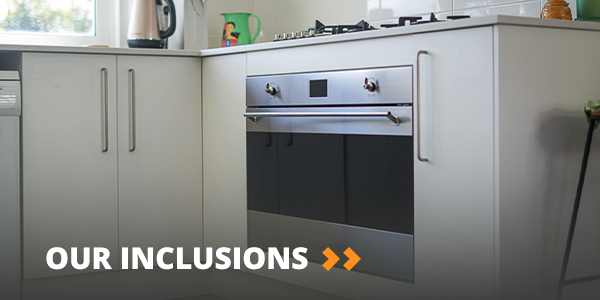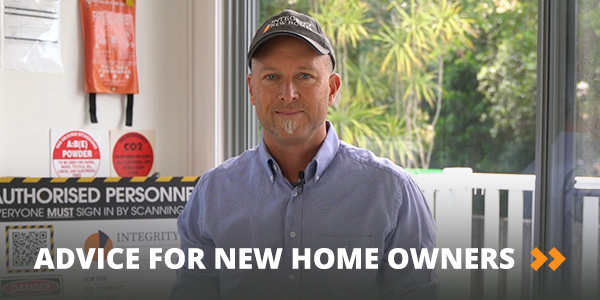
Here at Integrity New Homes Coffs Coast and Clarence Valley we are often asked by astute clients and investors, what foundation system do you build on?
The simple answer, whichever is the most appropriate for your particular block. There are many factors that will both guide us as a builder and also our engineer, and some of these are listed below (in no particular order):
- Site classification.
- Extent of cut and fill and exportation of spoil.
- Building footprint size.
- Location.
- Environmental.
- Availability of trades.
Site Classification:
We are truly fortunate here on the Coffs Coast and Clarence Valley regions to have desirable soils. Site Classification for foundation design is group depending on the expected range of movement (think soil jumping around the place) and range from "A" to "E". "A" is the most favourable conditions with "E" being the least desirable. We are quite fortunate that the composition along our gorgeous Coastal regions is predominantly what areis known as "M" or moderately reactive with some pockets of "S" or Slightly reactive. Both compositions exhibit little expected range of movement and are fantastic bases to build your homes. If you were unfortunate to strike a "H1", "H2", or "E" then you would have fewer foundation options than we do here in the Coffs Coast and Clarence Valley regions.
Extent of cut and fill and exportation of spoil:
If you are on a relatively flat site without stormwater from steeper sites flowing towards your home from sites uphill then you would benefit from all the available foundations; Raft, Waffle, or Biax. If however you find that your site is likely be the beneficiary of another lots stormwater overflow then we would likely recommend a Biax or Waffle as these designs are built above the ground level on void formers, whereas the raft is traditionally dug into the natural ground with a cluster of beams poured into the soil (essentially the soil left standing between the beams becomes your void former). The benefit of the Biax and Waffle is that they are built approximately 300mm above the pad level which gives greater opportunity to shape the land adjacent to drain nuisance stormwater away from the foundations and means you do not need to do as extensive excavation. If you can do a quick cut and fill (dig one side and fill the other side from the dirt just dug) and then not be required to remove any soil from site, wouldn't you do so? Sometimes the difference between a slab lasting 50 years and 10 years is the grading and upkeep of the surrounding soils.
Building footprint size:
If you were building a large home, then we would always recommend Biax or Waffle over a Raft. As mentioned above a Raft slab is built into the natural soils which requires considerable trenching and excavation to achieve the below ground level concrete beams. The spoil (left over soil) from these excavated beams has to go somewhere... usually this is a large unsightly stockpile in the corner of your block or via trucks to an approved disposal location. Why pay for all that additional excavation and exportation of spoil when there are other more economical ways to manage it. Conversely, if you were building a smaller home like a Granny Flat, Secondary Dwelling, or lower storey of a steep site or double storey home then you may want to consider Raft. Raft slabs whilst requiring more excavation only require the dirt on your block, concrete from the concrete truck, and reinforcing. Waffle slabs and Biax slabs require the addition of void formers to do what the soil is doing in for free a Raft slab. These void formers are made from polystyrene for Waffle and recycled plastic for Biax. Both are manufactured products and therefore have labour and material expenses as well as freight challenges/costs which I will describe further below.
Location:
Raft slabs use more concrete for the same footprint slab as a Biax and Waffle. A Raft slab is the oldest system and is a pretty simple concept, dig huge trenches/beams into ground and mass pour them with concrete. If the software says it isn't deep enough, make it deeper and put in more concrete. In some reactive locations these beams could be 500 wide and 1500 deep around the outside of the house. Think over 100 cubic metres of concrete for a residential home. Conversely Biax and Waffle use different engineering principles which may mean raising the overall height of the slab above the pad level and/or increasing the size of the reinforcing to achieve the same stiffening/resistance to movement. The Biax and the Waffle therefore will use less concrete on a reactive site than that of a Raft. If you are based remote and beyond what the concrete batch plant deems an appropriate distance the builder may be liable for substantial "additional time" charges for carting concrete and in some extreme circumstances the builder may need to pay for the addition of treatments to the concrete to prevent it setting in the concrete truck in transit. These transport charges can run into the thousands of dollars. On the flip side, Waffle and Biax slabs rely on the use of void formers which carry transport charges themselves. Most Waffle slab provides charge a flat rate to transport the polystyrene pods whether they are carting 20 pods or 400 pods, with the charging being upwards of $2000. If you had a small slab in a remote location it may be cheaper to pay for the additional concrete travel than to pay $2000 for 50 or so Waffle pods.
Environmental:
Raft slabs rely on the soil that was already on the site which is obviously a big tick for environmentally friendly construction. Biax void formers in Biax slabs are made from 100% recycled plastic and are recyclable again in many years to come which is also a big tick for environmentally friendly construction. Waffle void formers in Waffle slabs are however made from polystyrene which is not recyclable, but is also prone to breaking into pieces which can pollute waterways. If you are pro-environment (which we all should be to some extent) then you would likely not want to see a Waffle slab being constructed on your block.
Availability of trades:
The last major consideration is the general location and its a pretty simple one. Not every trade knows how to work with every product available on the market, and some are just not interested in learning. Raft slabs have been around as long as we have had slab construction guides and all concretors are trained in how to prepare and pour a Raft slab. Waffle slabs are becoming more common having been around for approximately 20-years but are definitely a larger focus for Metro trades than regional trades (due to the previously mentioned freight costs of some of these products). Biax is a relatively new entrant to the Australian market having been developed in New Zealand. Biax builds upon the concept of a Waffle slab (being biaxial ribs in two directions) but replaces the 1090x1090 polystyrene with 750x750 recycled plastic. The closer frequency of the concrete ribs between the void formers means that a Biax slab at the same height as a Waffle will have more concrete and more reinforcing resulting in a stiffer and better slab. In some instances as much as a builder would prefer to use Biax or Waffle, if the trades are not acclimatised to these products, they will have no choice but to use a Raft slab.
With all that in mind, if you have a particular preference for one type of slab over another, its as simple as letting your Integrity New Homes Coffs Coast and Clarence Valley sales consultant know early in the consultation process so that we can investigate the suitability and can refine the costings.
The cover image of this News post is a photo aerially of a Biax slab prior to concrete pour. The image below is a photo of broken Waffle pods strewn through a Korora subdivision that the Author was involved in cleaning up all the way back to 2013. A mini-tornado appeared out of nowhere, grabbed the strapped pack of polystyrene pods and imploded them and then spread the polystyrene far and wide. For anyone wondering, it took many hours, but we got every last piece.




